The Akita Cross Staffy, also known as the Golden Akita, is a unique mixed breed dog that combines the intelligence and loyalty of the American Akita with the strength and agility of the American Staffordshire Terrier.
This cross breed is not recognized by the American Kennel Club, but has gained popularity among experienced owners who appreciate the unique qualities of this hybrid. The Akita Staff is a powerful and athletic dog with a strong protective instinct, making it an excellent choice for a family pet or guard dog.
Originating from Japan, the Akita side of this mix is known for its dignified and reserved nature, while the American Staffordshire Terrier brings a playful and affectionate personality. The result is a well-rounded and versatile dog that is suitable for a variety of living situations. However, due to their strong-willed nature, they require firm and consistent training from an early age.
If you are considering adding an Staffkita to your family, it is important to choose a reputable breeder who understands the specific needs of this cross breed. With proper socialization and training, these puppies can grow into loving and loyal companions for years to come.
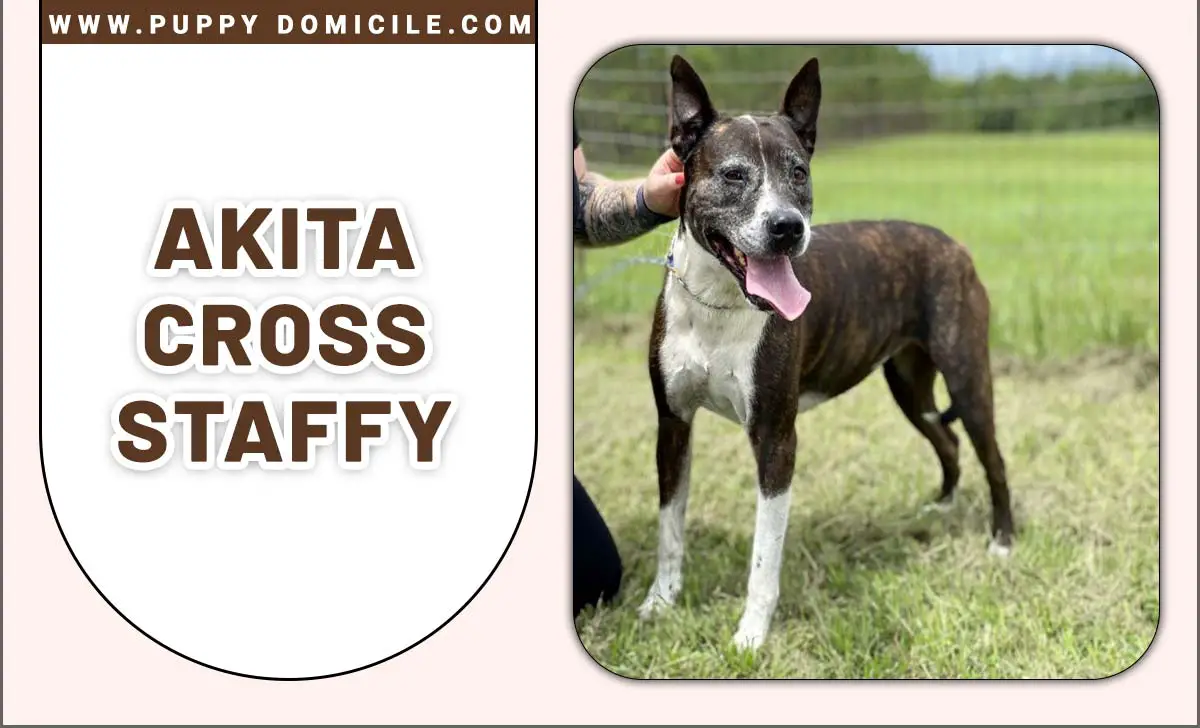
Akita Cross Staffy Overview
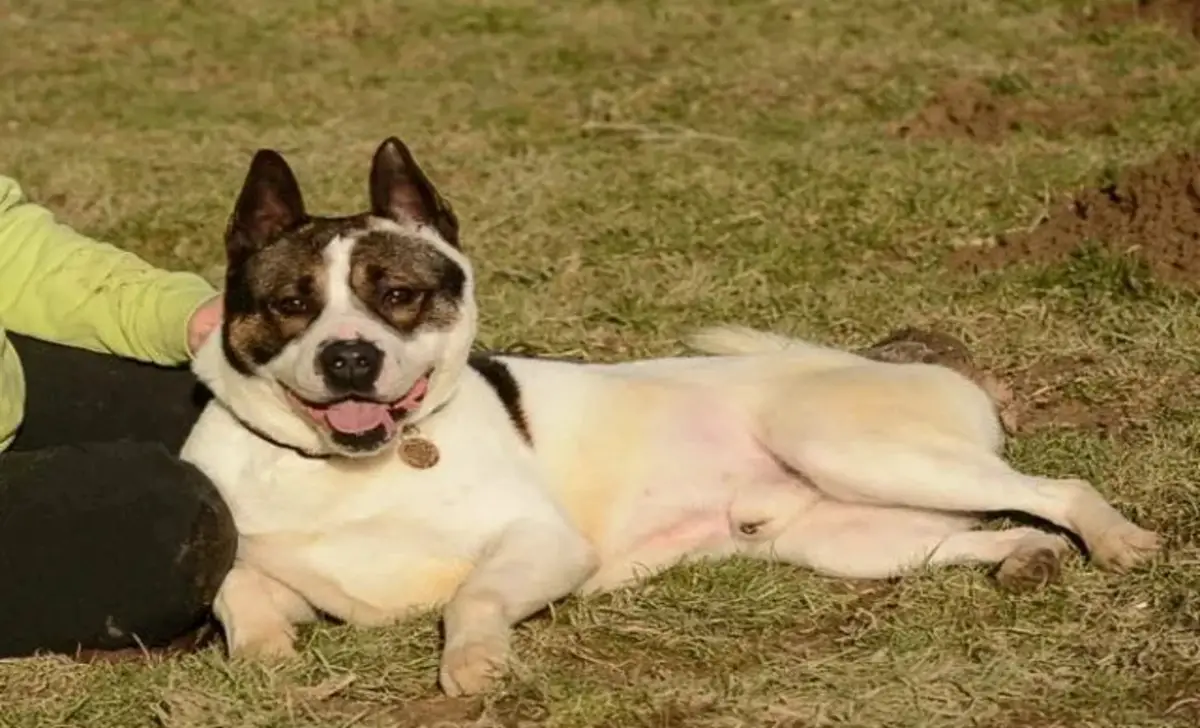
An Akita Cross Staffy, also known as an Akita Staffy or Staffakita, is a hybrid dog breed that results from crossing an Akita with a Staffordshire Bull Terrier. This mix combines the unique characteristics of both parent breeds, leading to a dog that is loyal, energetic, and protective.
| Feature | Description |
|---|---|
| Size and Weight | Medium to large (40-70 pounds, 18-24 inches) |
| Coat and Colors | Short to medium-length; colors include black, brown, white, brindle, and combinations |
| Temperament | Loyal, protective, intelligent, energetic, and playful; may be stubborn |
| Health | Generally healthy; potential for hip dysplasia, eye conditions, and skin allergies |
| Life Expectancy | 10 to 15 years |
| Grooming | Moderate; regular brushing needed |
| Exercise Needs | High; daily exercise required |
Parent Breeds Akita
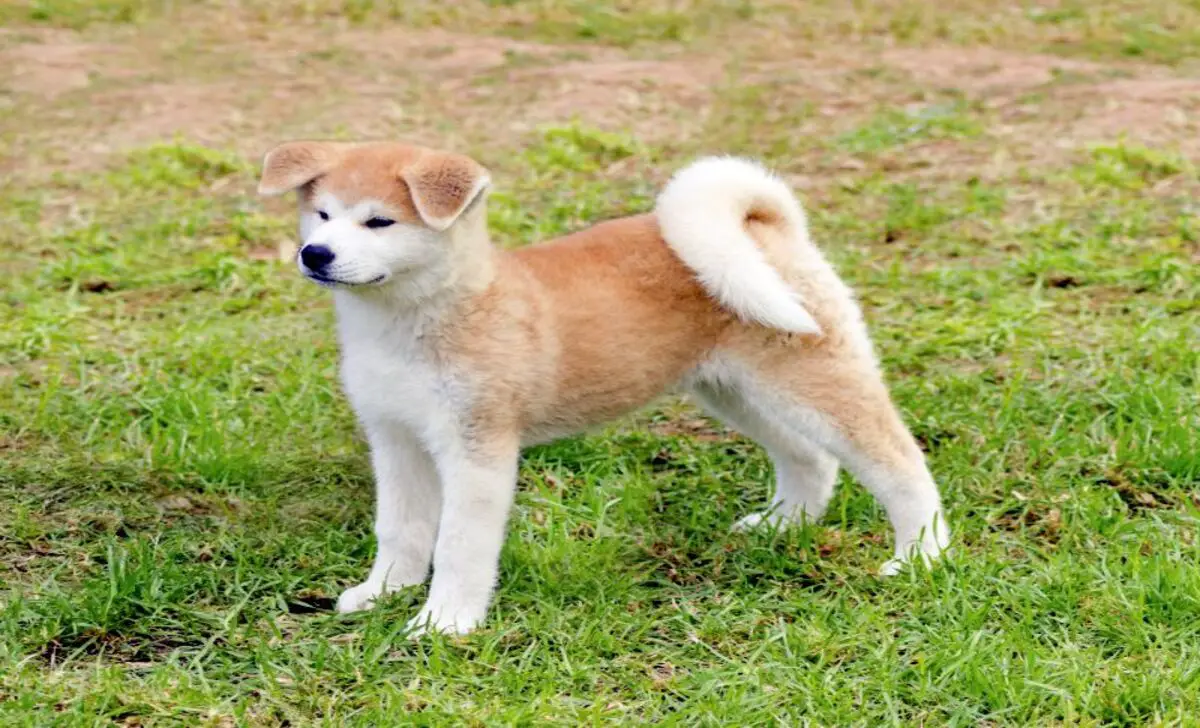
Origin And History
The Akita, originating from Japan, is a large and powerful breed with a rich history. It is divided into two strains: the Akita Inu from Japan and the American Akita. The breed was initially used for guarding royalty and nobility in feudal Japan and hunting large game such as bears.
In the early 20th century, the breed faced a decline, but efforts were made to preserve and restore it. Helen Keller is credited with bringing the first Akita to the United States in 1937, which eventually led to the development of the American Akita.
Physical Characteristics
- Size: Akitas are large dogs, with males typically standing 26-28 inches tall and females 24-26 inches tall.
- Weight: Males weigh between 100-130 pounds, while females weigh between 70-100 pounds.
- Coat: They have a double coat, with a dense undercoat and a short, harsh outer coat. The American Akita often has a more bear-like head and larger bone structure compared to the Japanese Akita Inu.
- Color: Akitas come in various colors, including white, brindle, and pinto. The American Akita can be any color, whereas the Japanese Akita Inu has a more limited color range, usually red, fawn, sesame, brindle, and pure white.
Temperament And Behavior
Akitas are known for their loyalty, bravery, and aloofness with strangers. They are independent and dominant, requiring a firm, consistent hand in training. Akitas are typically quiet dogs but can be very vocal with grunts, moans, and mumbles. They are protective and can be aggressive toward other dogs, especially those of the same sex. Socialization from an early age is crucial.
Health And Lifespan
- Lifespan: Akitas typically live 10-15 years.
- Common Health Issues: They are prone to certain health issues, including hip dysplasia, thyroid problems, progressive retinal atrophy (PRA), autoimmune diseases, and bloat (gastric dilatation-volvulus).
Staffordshire Bull Terrier (Staffy)
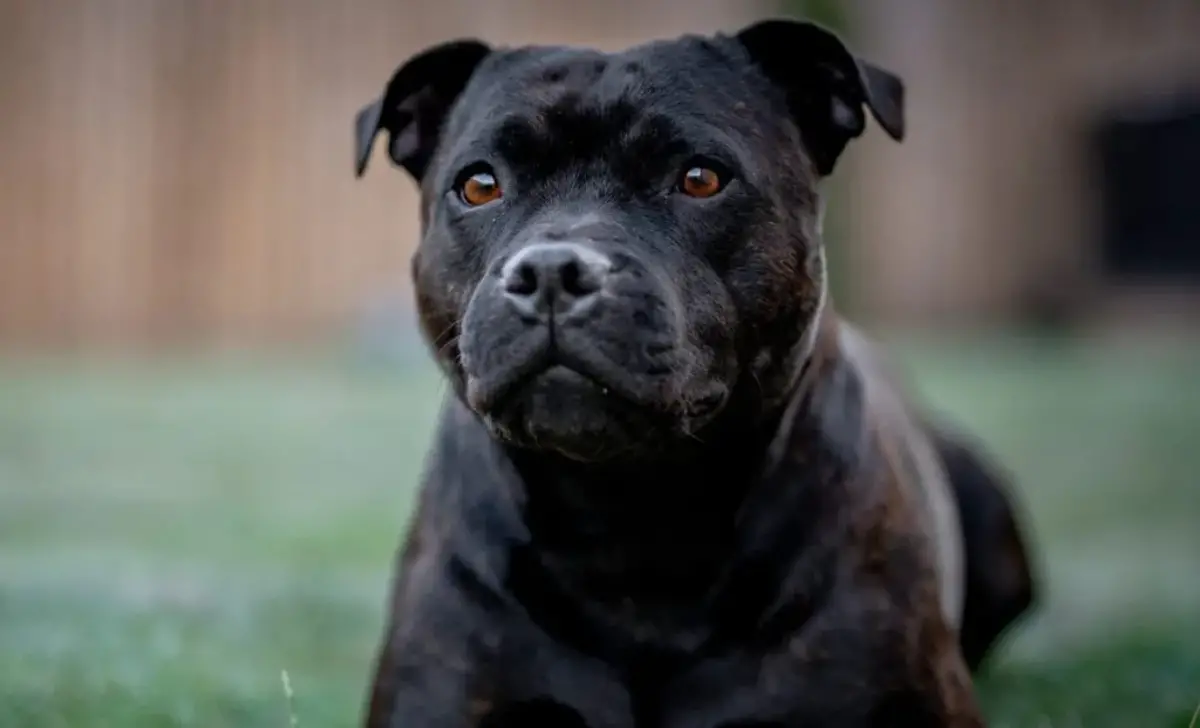
Origin And History
The Staffordshire Bull Terrier, often called the Staffy, originated in the Black Country of Staffordshire, England, during the early 19th century. It was bred from the old English Bulldog and various local terriers to create a smaller, more agile dog and adept at bull-baiting and ratting. With the decline of blood sports, the breed became a companion animal. The Staffy was recognized by the Kennel Club in the UK in 1935.
Physical Characteristics
- Size: Staffordshire Bull Terriers are medium-sized dogs, standing 14-16 inches tall.
- Weight: They typically weigh between 24-38 pounds.
- Coat: They have a short, smooth coat that lies close to the skin.
- Color: Staffies can be red, fawn, white, black, blue, or any of these colors with white. They may also have brindle or brindle with white.
Temperament And Behavior
Staffies are known for their affectionate nature and bond closely with their families. They are energetic, intelligent, and enthusiastic, often described as “people dogs” due to their love for human companionship. Staffies are typically good with children, earning them the nickname “nanny dog.”
However, their terrier lineage means they can be tenacious and may exhibit dog aggression if not properly socialized. They are eager to please but can be stubborn, requiring consistent training.
Health And Lifespan
- Lifespan: Staffies generally live 12-14 years.
- Common Health Issues: The breed can be prone to cataracts, hip dysplasia, luxating patellas, skin allergies, and certain metabolic disorders such as hyperthyroidism. They may also suffer from hereditary conditions like L-2-Hydroxyglutaric Aciduria (L2HGA) and Hereditary Cataracts (HC).
Both breeds require regular exercise, mental stimulation, and socialization to ensure they develop into well-rounded pets. Responsible breeding practices and regular veterinary check-ups can help mitigate some of the health issues they might face.
Characteristics Of Akita Cross Staffy
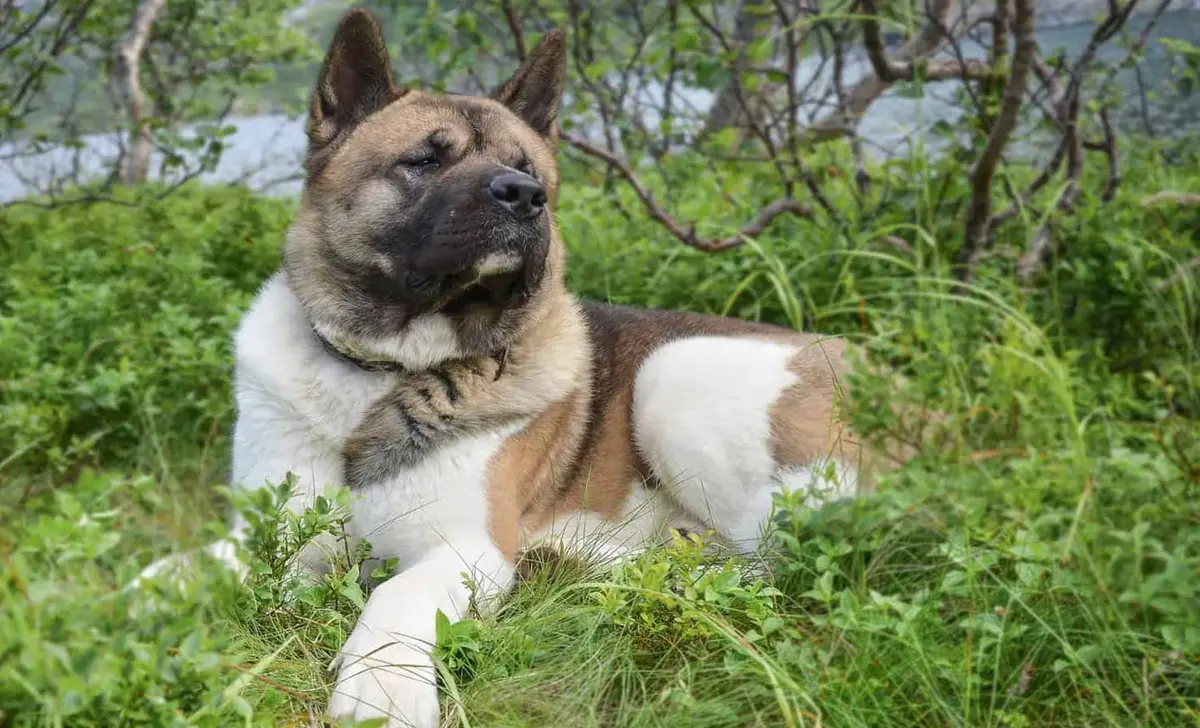
Physical Appearance
An Akita Staffy Mix typically weighs 40-70 lbs and stands 18-24 inches tall. They often have a short, dense coat, which can come in colors like black, white, brindle, or fawn. Common physical traits include the Akita’s broad head and erect ears, combined with the Staffy’s muscular build and strong jaw. This mix may also inherit the Akita’s curled tail and the Staffy’s deep chest, creating a robust and agile dog.
Temperament And Personality
An Staffkita typically exhibits a blend of loyalty, courage, and protectiveness. They are often affectionate and playful, making them good companions. These dogs require consistent socialization and training from an early age to manage their strong-willed nature.
They can be compatible with children and other pets if properly introduced and supervised, though their energetic demeanor and protective instincts necessitate caution. Early and ongoing training helps them develop into well-behaved pets. Their intelligence and eagerness to please make them responsive to positive reinforcement techniques.
Common Health Issues
Akita Cross Staffies, a mix between an Akita and a Staffordshire Bull Terrier, can inherit health issues from both parent breeds. Here are some common health problems they may face:
| Health Issue | Description |
|---|---|
| Hip Dysplasia | A genetic condition where the hip joint doesn’t fit properly into the hip socket, leading to pain, lameness, and arthritis over time. |
| Elbow Dysplasia | Like hip dysplasia, this condition affects the elbow joint, causing pain, lameness, and arthritis. |
| Hypothyroidism | A condition where the thyroid gland does not produce enough thyroid hormone, leading to weight gain, lethargy, and skin problems. |
| Bloat (Gastric Dilatation-Volvulus) | A serious and potentially fatal condition where the stomach twists, trapping gas and causing severe pain and distress. Immediate veterinary attention is required. |
| Heart Disease | Cardiopathy and aortic stenosis can affect heart function, leading to lethargy, coughing, and difficulty breathing. |
| Autoimmune Disorders | Conditions where the immune system attacks the body’s own tissues, such as pemphigus and lupus, leading to skin problems, joint pain, and other systemic issues. |
| Progressive Retinal Atrophy (PRA) | A genetic eye condition that causes progressive vision loss and can lead to blindness. |
| Cataracts | Clouding of the eye lens, leading to impaired vision and potentially blindness if left untreated. |
| Allergies | Can include food allergies, contact allergies, or environmental allergies, causing itching, skin infections, and digestive issues. |
| Cancer | Both parent breeds are predisposed to certain types of cancers, such as mast cell tumors and lymphomas. |
Importance Of Regular Veterinary Check-Ups
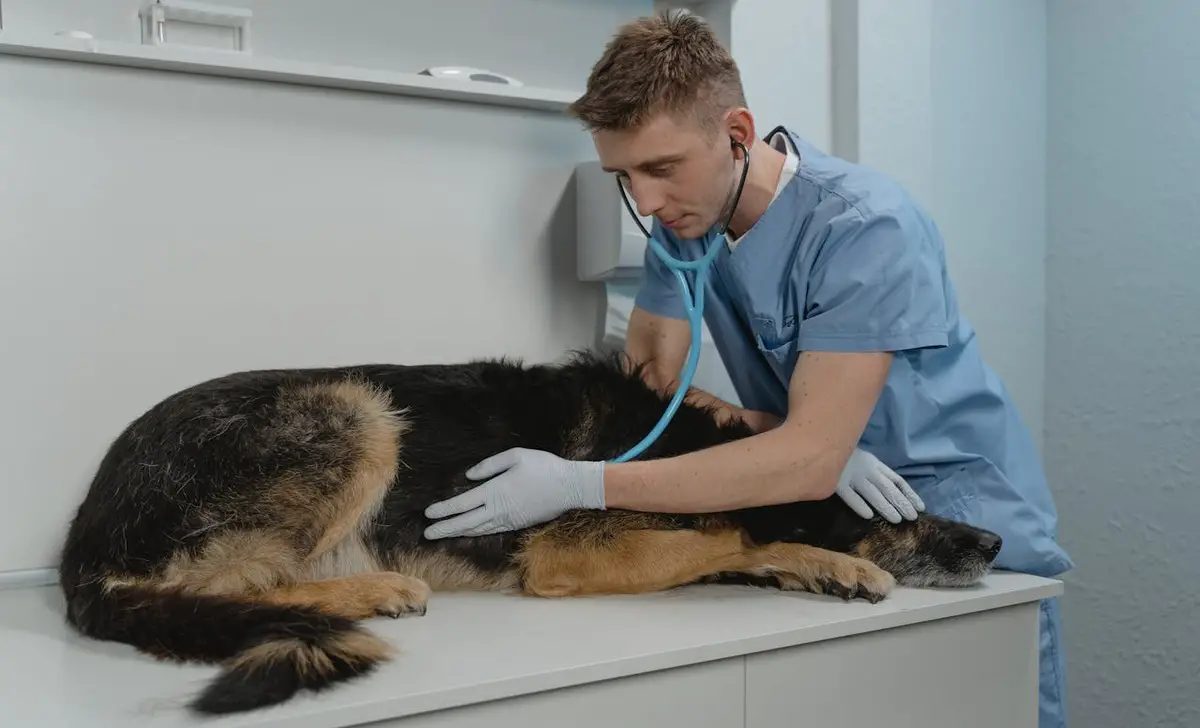
Regular veterinary check-ups are crucial for Akita Staffy Mix’s health and well-being. Here’s why:
Regular exams help detect health issues early, before they become severe or life-threatening, improving the chances of successful treatment.
Keeping vaccinations current prevents common infectious diseases, ensuring long-term health and safety. Regular check-ups help manage parasites like fleas, ticks, and worms, which can cause serious health problems. Dental exams prevent dental diseases, which can lead to more severe systemic issues if untreated.
Veterinarians can guide you on maintaining a healthy weight and preventing obesity-related conditions like diabetes, arthritis, and heart disease. Professional advice on diet and nutrition helps ensure that your dog receives the right balance of nutrients for their age, size, and health status.
Care Requirements
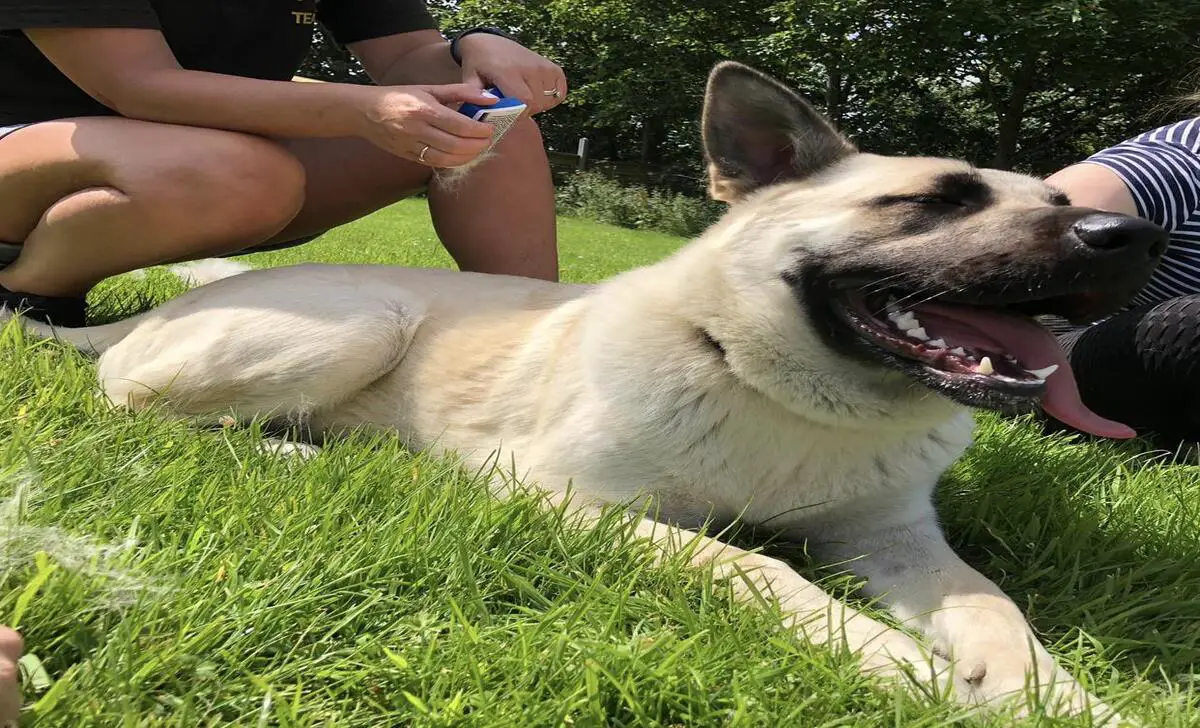
Diet And Nutrition
Recommended Diet for Maintaining Health: The Akita Staffy Mix, a mix between the Akita and the Staffordshire Bull Terrier, requires a balanced diet rich in proteins, fats, vitamins, and minerals. Here are some dietary guidelines:
- High-Quality Dog Food: Choose a high-quality commercial dog food appropriate for their life stage (puppy, adult, senior). Look for foods where meat is the first ingredient, and avoid fillers like corn, wheat, and soy.
- Protein: Ensure the diet is rich in protein to support muscle development and overall health. Chicken, beef, fish, and lamb are good protein sources.
- Fats: Healthy fats are crucial for energy and maintaining a shiny coat. Look for sources like fish oil and flaxseed.
- Carbohydrates: Include wholesome grains like brown rice, oatmeal, and sweet potatoes for energy and digestive health.
- Fruits and Vegetables: Incorporate fruits and vegetables for vitamins and antioxidants. Blueberries, carrots, and spinach are excellent choices.
- Hydration: Ensure your dog has access to fresh water at all times.
Portion Control and Feeding Schedule:
- Portion Control: Follow the feeding guidelines on the dog food packaging, adjusted for your dog’s weight, age, and activity level. Overfeeding can lead to obesity, which is common in Akita crosses.
- Feeding Schedule:
- Puppies: 3-4 daily meals to support growth and energy needs.
- Adults: 2 meals per day, morning and evening.
- Seniors: 2 smaller meals to prevent obesity and maintain energy levels.
Regularly monitor your dog’s weight and adjust portions as necessary. Consult your veterinarian for personalized advice.
Exercise Needs
Daily Exercise Requirements: The Akita Staff is an active and energetic breed requiring significant daily exercise to stay healthy and happy. Aim for at least 60-90 minutes of exercise per day.
Types of Activities and Exercises Suitable for the Breed:
- Walking/Jogging: Daily walks or jogs are essential. Aim for at least two walks per day.
- Playtime: Engage in active play, such as fetch, tug-of-war, or frisbee.
- Training Sessions: Incorporate obedience training and mental stimulation exercises to keep their minds sharp.
- Agility Training: These dogs excel in agility courses, which provide physical and mental exercise.
- Socialization: Regular interaction with other dogs and people is crucial for their social development.
- Hiking: Take them on hikes to satisfy their adventurous spirit.
Grooming
Coat Care and Grooming Frequency: The grooming needs of an Akita Staffy Mix depend on the coat type they inherit from their parents. Generally, they may have a short to medium-length coat that sheds moderately.
- Brushing: Brush their coat 2-3 times weekly to remove loose hair and prevent matting. During shedding seasons, daily brushing might be needed.
- Bathing: Bathe your dog every 2-3 months or as needed. Over-bathing can strip natural oils from their skin and coat.
Nail Trimming, Dental Care, and Other Grooming Needs:
- Nail Trimming: Trim their nails every 3-4 weeks. If you hear their nails clicking on the floor, it’s time for a trim.
- Dental Care: Brush their teeth 2-3 times weekly to prevent dental issues. Provide dental chews and toys to help keep their teeth clean.
- Ear Cleaning: Check and clean their ears weekly to prevent infections. Use a vet-recommended ear cleaner.
- Eye Care: Wipe their eyes with a damp cloth to remove any discharge and prevent tear stains.
Regular grooming sessions provide an excellent opportunity to check for any signs of health issues, such as skin problems, lumps, or parasites. Always consult your veterinarian for tailored advice based on your dog’s needs.
Training And Socialization
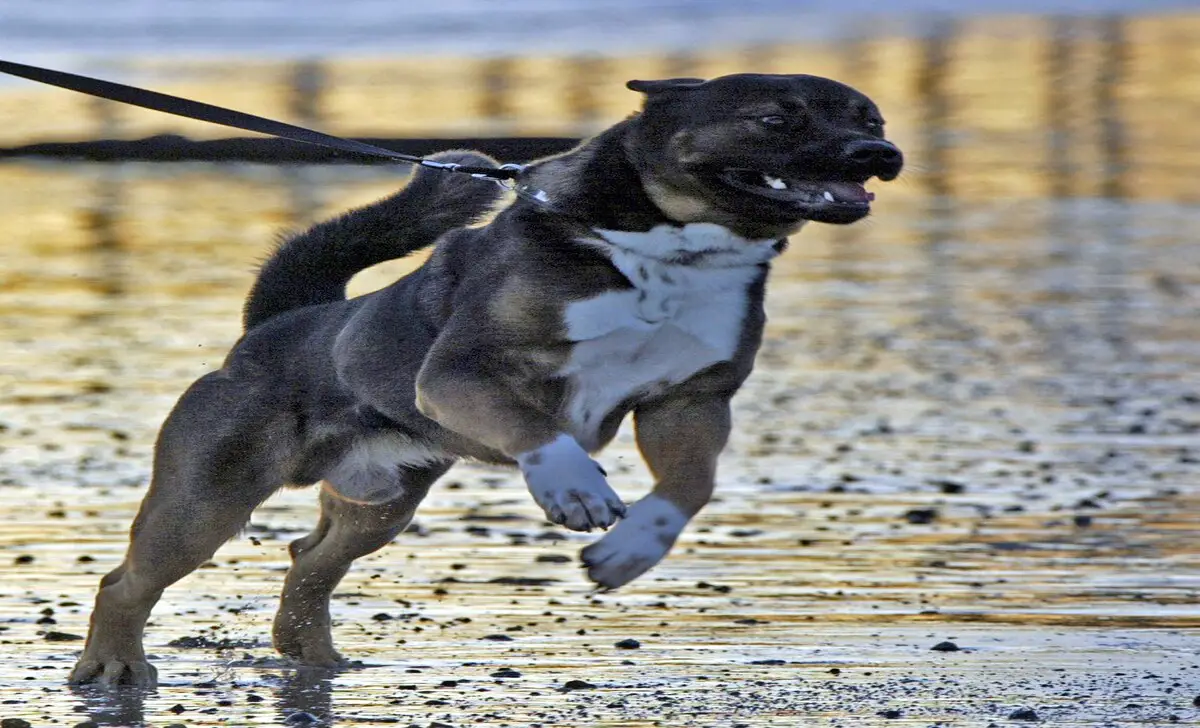
Training and socialization are vital for Staffkita’s development. Early socialization exposes them to varied experiences, preventing fear or aggression. Positive reinforcement, consistency, and patience are effective training techniques.
Basic commands and gradual exposure to new stimuli build a foundation of good behavior. Common behavioral issues like aggression or separation anxiety require professional intervention. Addressing these issues with patience and positive methods ensures a well-adjusted and obedient companion.
- Start with basic commands: Sit, Stay, Come, and Leave It.
- Use positive reinforcement: Treats, praise, and toys for desired behavior.
- Be consistent: Use the same commands and rewards consistently.
- Practice patience: Mixed breeds may need extra time to learn commands.
- Incorporate mental and physical stimulation: Toys, puzzles, and exercise sessions.
- Socialize early and regularly: Expose to various people, animals, and environments.
- Address behavioral issues promptly: Seek professional help for aggression, anxiety, or other concerns.
Living Conditions
The Akita Staffy Mix thrives in environments where they have ample space to move and explore, making both apartments and houses with yards suitable options. However, they require regular exercise and mental stimulation, so access to outdoor space is beneficial.
In apartments, daily walks and interactive play sessions are essential to meet their needs, while houses with yards offer more opportunities for off-leash activity. Regardless of living conditions, indoor space should be comfortable and secure, with outdoor areas adequately fenced to ensure the dog’s safety.
Adoption And Buying
When considering adoption or purchase of an Akita Staff, thorough research is paramount. For reputable breeders, inquire about health screenings, socialization efforts, and living conditions. When adopting from shelters, assess the dog’s behavior, health records, and compatibility with your lifestyle. Ask breeders or adoption agencies about the dog’s health history, veterinary care, and lineage.
Discuss the dog’s nutrition and training needs. Given their mixed breed status, consider both Akita and Staffordshire Terrier traits. Ensure ample space for this large breed, akin to Saint Bernards or Great Danes. Ultimately, prioritize the well-being and compatibility of both the dog and the prospective owner.
Conclusion
The Akita cross is a unique breed of dog that combines the traits of an Akita with those of another breed . This hybrid breed has recently become more popular as people seek to create new, interesting dog breeds. They are an intelligent breed that requires proper training, exercise , grooming, and health care . The Cross Staffy is a fantastic hybrid breed that combines the best of both worlds.
They are loyal and protective like Akitas yet playful and affectionate like Staffies. The breed requires considerable exercise , socialization, and training but will reward you with endless love and loyalty. They need attention and love from their owners to thrive and become the best companion possible. If you want to adopt an Akita Cross Staffy, do your research and provide them with the care they deserve.
Frequently Asked Questions
1.Who Would Win A Battle Between A Pit Bull And An Akita?
It is impossible to predict the outcome of a battle between a pit bull and an akita, as it depends on various factors such as size, strength, temperament, and training of the individual dogs. It is always best to avoid putting dogs in situations where they may become aggressive or hurt each other.
2.What Would The Approximate Or Exact Bite Force Of A Japanese Akita Cross Rottweiler Dog Be?
It is difficult to provide an exact bite force for a Japanese Akita cross Rottweiler dog as it can vary based on individual size, health, and genetics. However, both Akita and Rottweiler breeds are known for their strong jaws and bite force.
On average, Rottweilers have a bite force of around 328 pounds per square inch (PSI), while Akitas have a bite force of about 350 PSI. Therefore, a cross of these breeds may have a bite force in a similar range, possibly closer to the higher end due to the combination of their genetics.
3.Are Akita Mixes Good Dogs?
Yes, Akita mixes can be great dogs. However, it’s important to understand the breed mix and their temperaments before bringing them into your home. Proper socialization and training are also key to ensuring a happy and well-behaved pet.
4.What Is A Good Cross With Staffy?
Many breeds make good crosses with Staffies, but it ultimately depends on individual personalities and temperaments. Some popular crosses include Labradors, Boxers, and Bulldogs.
5.What Can A Staffy Be Crossed With?
Staffordshire Bull Terriers can be crossed with dog breeds, including Akitas, Boxers, Bulldogs, and Poodles. When considering a crossbreed, it is important to research the temperament and health issues associated with both parent breeds .
6.How Does Akita Show Affection?
Akitas show affection uniquely, often through physical touch and leaning on their owners. They may also wag their tails, lick their owners’ faces, or give gentle nibbles. Akitas are known for being loyal and protective of their family members.
7.How Difficult Is It To Raise An Akita And A Rottweiler From Puppies To Get Along In The Same Household?
Raising an Akita and Rottweiler together from puppies can be challenging due to their strong-willed and dominant personalities. Proper socialization, training, and consistent discipline are essential to help them get along peacefully in the same household. Supervision, separate feeding areas, and individual attention can also help minimize conflicts.
Understanding each breed’s characteristics is crucial, as establishing clear rules and boundaries and providing plenty of exercise and mental stimulation ensures a harmonious relationship between the two dogs. Patience, consistency, and positive reinforcement are key in successfully raising these breeds together.
8.What Are The Differences Between Akita Cross-Staffy Puppies And Purebred Staffy Puppies?
Akita cross Staffy puppies will inherit traits from both parent breeds, potentially resulting in a mix of physical and behavioral characteristics. On the other hand, Purebred Staffy puppies will have more predictable traits as they come from a lineage of the same breed. Akita Staffy Mix puppies may exhibit a wider range of personalities, sizes, and appearances than purebred Staffy puppies.
